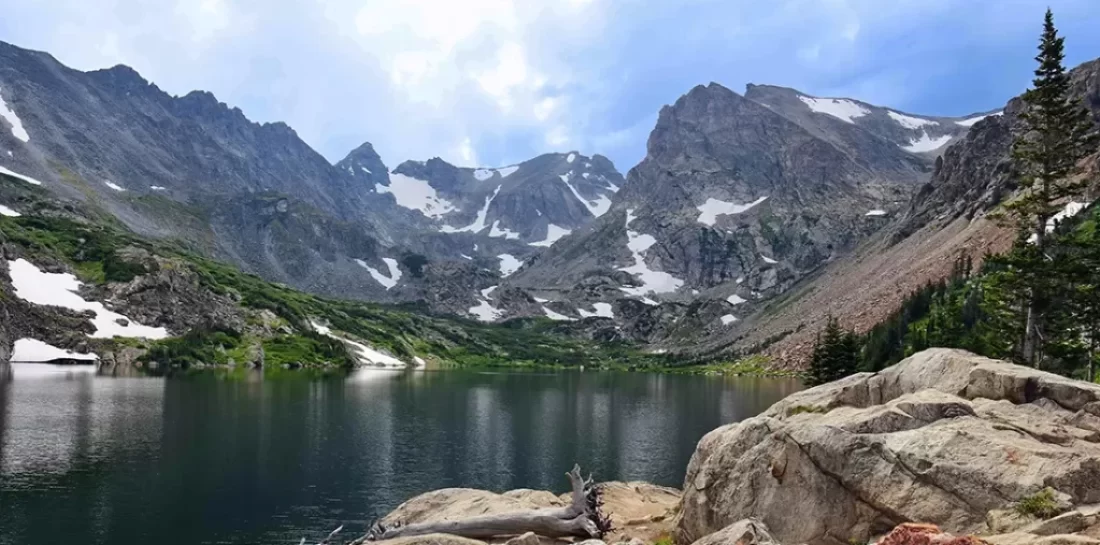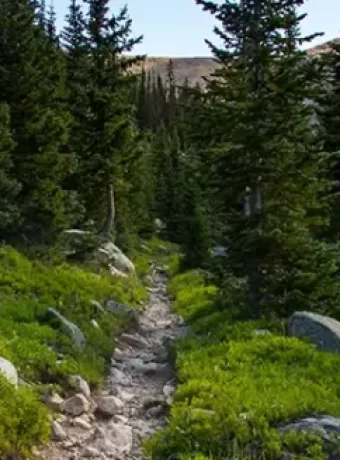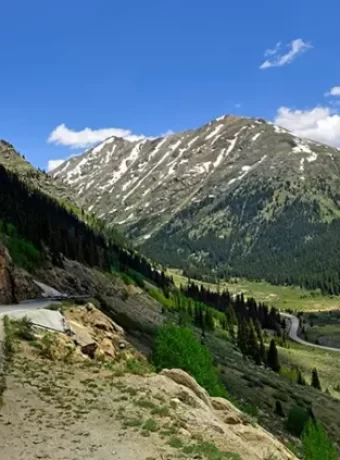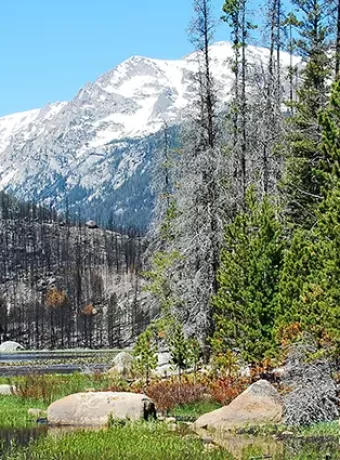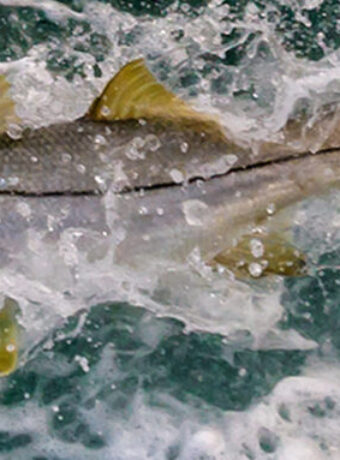Guide to Indian Peaks Wilderness Area Excursions
Thinking about heading into the mountains near Boulder or Denver? You’ve likely heard whispers of the stunning beauty packed into the Indian Peaks Wilderness Area. It’s a place where jagged peaks kiss the sky and alpine lakes glitter like scattered jewels, a true gem within the national forests system.
This high-altitude wonderland sits right next door to the famous Rocky Mountain National Park. But it offers a wilder, more rugged experience for hikers, backpackers, anglers, and anyone interested in day hiking. Get ready to explore everything the peaks wilderness has to offer.
Table of Contents
A Glimpse into the Past: The Story of Indian Peaks
The Indian Peaks Wilderness Area wasn’t always a designated sanctuary. Its formal protection came in 1978 when President Jimmy Carter signed the act passed by Congress. This act set aside about 73,391 acres of incredible Colorado high country within the Arapaho and Roosevelt National Forests.
Imagine a landscape dotted with over 50 lakes and crossed by 133 miles of trails managed by the Forest Service. Six mountain passes slice across the Continental Divide within its borders. Elevations here soar from 8,400 feet up to a dizzying 13,500 feet, offering dramatic mountain national park style views without the same crowds.
This protected wilderness area spans montane forests, sub-alpine meadows, and stark alpine tundra environments. It connects directly to Rocky Mountain National Park on the north, sharing a border. To the south lies the James Peak Wilderness, another beautiful slice of the rocky mountain landscape.
Interestingly, back in 1915, the visionary Enos Mills considered including this land in his proposal for Rocky Mountain National Park. Later decisions redrew the park boundaries, leaving these peaks separate, establishing the character of this distinct wilderness area. But their importance as part of the Roosevelt National Forest system was clear.
The name itself pays tribute to the land’s original inhabitants. Botanist Ellsworth Bethel, exploring in the early 1900s, named many peaks after Native American tribes. You’ll find Arapaho Peak, Apache Peak, Navajo Peak, Pawnee Peak, Shoshoni Peak, and James Peak honoring this deep history.
For thousands of years, tribes like the Arapaho frequented these mountains, especially during summer months. Today, the U.S. Forest Service manages most of the Indian peaks wilderness, keeping it pristine for generations. It’s easy to see why it’s among the most visited wilderness areas – its raw beauty is just a short drive from major Colorado cities.
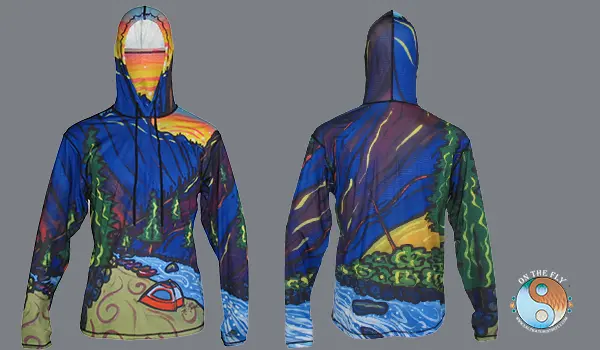
Wilderness demands on your body and outdoor apparel is demanding. Salmon River Graphic Hoodie has extended cuffs with thumb holes, sewn in facemask and UPF-50 sun protection. Our Secluded Cutthroat Hydrophobic Heavy Weight Quarter Zip Hoodie.
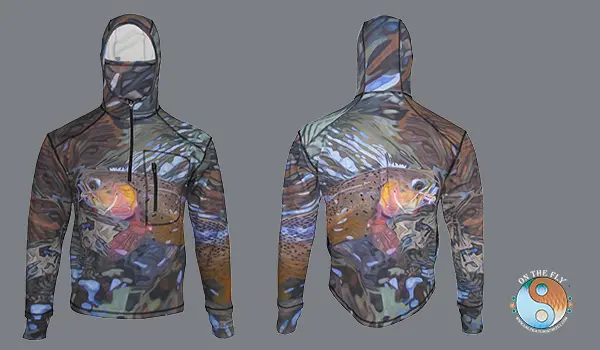
Backpacking Adventures: Top Trails with Campsites
Ready to strap on a pack and spend a night (or few) under the stars? The Indian Peaks Wilderness Area delivers some unforgettable backpacking experiences. Remember, planning is essential here for any trip into the backcountry zone.
Overnight permits are required for camping between June 1 and September 15. You’ll need to book these ahead of time, especially for popular spots in various backcountry zones. You can get permits through recreation.gov; this is a permit required area during the high season.
Some zones, like the areas around Diamond Lake, Jasper Lake, Crater Lake, and Caribou Lake, require you to camp only at marked, designated sites. Other areas allow dispersed camping, but always follow the rules. That means setting up camp at least 100 feet away from water sources and trails.
Also, campfires are prohibited east of the Continental Divide and in certain western zones like Crater Lake and Caribou Lake. Check current fire restrictions with the appropriate ranger district before you go. Now, let’s look at some fantastic backpacking trails within this part of the national forest.
Wilderness excursions my preferred type of lower body Performance Apparel are Graphic Leggings. And a great pair of Graphic Gloves for sun protection and allow me to operate a SLR camera.
Montana Wilderness areas, streams and trail offer a beginning or end of an incredible adventure. Central Montana is a good beginning.

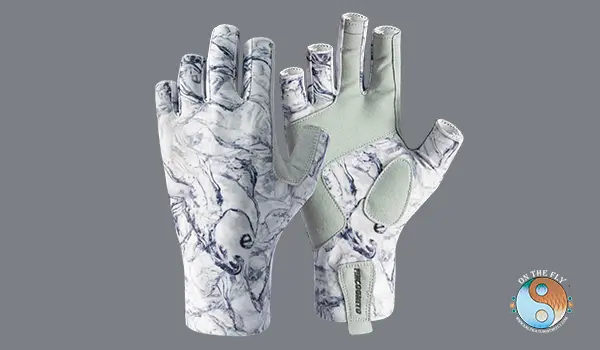
Diamond Lake Trail
Looking for a relatively short trip with a big scenic payoff? The Diamond Lake Trail is a great choice. It’s perfect for newer backpackers or a quick weekend escape into the peaks wilderness area.
The hike clocks in at 5.4 miles roundtrip with about 1,220 feet of elevation gain. Most folks find it moderately difficult. You start at the Fourth of July Lake Trailhead.
Follow the Arapaho Pass Trail for just over a mile. Then, hang a left onto the Diamond Lake Trail itself. You’ll hike through lush forests and past cascading waterfalls before reaching the beautiful alpine lake, a classic Indian peaks experience.
Designated campsites await near Diamond Lake. One heads up: the Fourth of July Trailhead parking is notoriously small and fills up fast, especially on weekends. Aim for a very early start for this popular lake trail.
Crater Lake via Cascade Creek Trail
This one is iconic. Crater Lake, with Lone Eagle Peak soaring above it, is arguably the most famous view in the Indian Peaks Wilderness Area. Getting there requires significant effort, however.
Starting from the Monarch Lake Trailhead on the western side in Grand County, the roundtrip journey is about 15 miles. You’ll gain around 2,300 feet in elevation, making it a challenging trek along Cascade Creek. The trail first leads past Mirror Lake.
Waterfalls like Cascade Falls, vibrant alpine meadows, and groves of aspen trees line the path, including sections along the Upper Cascade Creek. Reaching Crater Lake feels like stepping into a postcard. Designated campsites are available near both Crater Lake and Mirror Lake, but snagging a permit requires luck and planning well in advance for this backcountry zone.
This trail is best suited for a multi-day trip into the indian peaks wilderness. Give yourself time to soak in the dramatic scenery, maybe comparing Crater Lake, Caribou Lake, Columbine Lake, and others. It’s a bucket-list destination for many Colorado backpackers accessing the peak wilderness from Monarch Lake.
Jasper Lake Trail
Hoping for stunning lake views without the extreme crowds sometimes found at Crater Lake? Consider the trail to Jasper Lake. It offers a good challenge and beautiful scenery accessible from the east side.
The hike is approximately 11 miles roundtrip from the Hessie Trailhead. Expect an elevation gain of about 2,000 feet. The difficulty leans towards moderate to challenging.
You’ll follow Middle Boulder Creek uphill, passing waterfalls and enjoying views back towards Eldora. Wildflowers often carpet the meadows in summer near Jasper Lake. Designated campsites are available at Jasper Lake, making it a great backpacking target.
Feeling ambitious? You can continue hiking up past Jasper Lake to Devil’s Thumb Lake. This route gives you flexibility and some solitude compared to other popular trails in the Roosevelt National Forest portion of the wilderness.
Caribou Lake Trail
Another excellent option starting from the Monarch Lake Trailhead is the Caribou Lake Trail. It’s a peaceful alternative to the bustling Crater Lake route, often explored alongside Columbine Lake or Gourd Lake. This trail is about 9 miles roundtrip.
The elevation gain is around 2,000 feet, putting it in the moderate difficulty category. The trail climbs steadily through forests managed by the Sulphur Ranger District to the serene alpine Caribou Lake. Designated campsites provide good spots to relax near the lake.
Caribou Lake offers lovely mountain vistas and decent fishing chances. It’s a solid choice for intermediate backpackers seeking tranquility and natural beauty in the Indian peaks. The climb feels more gradual than some others starting from Monarch Lake.
Red Deer Lake via Buchanan Pass Trail
If solitude is high on your list, the journey to Red Deer Lake might be perfect. This trail is less traveled than many others in the wilderness area. It’s a challenging 13.6 miles roundtrip.
Starting from the Camp Dick area (Buchanan Pass Trailhead), you’ll climb about 2,500 feet. The path follows Middle Saint Vrain Creek up towards the pass. Red Deer Lake is a small, pretty alpine tarn tucked below a dramatic mountain wall in the Roosevelt National Forest.
There are no designated sites here. You’ll need to find a suitable spot in the open meadows following Leave No Trace principles. It’s a remote and rewarding destination within the Indian Peaks Wilderness, offering a chance for a brisk swim if you’re brave.
King Lake Trail
For epic views and potential wildlife sightings, tackle the King Lake Trail. This challenging route covers roughly 16.5 miles roundtrip. The elevation gain is significant at around 2,800 feet.
Starting again from the popular Hessie Trailhead, the trail climbs towards Devil’s Thumb Pass and crosses the Continental Divide. Along the way, you might see moose in the willow thickets. Wildflower meadows burst with color in July and August near Long Lake and Lake Isabelle lower down.
Views from near the pass stretch across the divide, offering a vast perspective of the indian peaks wilderness area. Camping is permitted in the Middle Boulder backcountry zone near the lake (no designated sites). Backpackers often combine this with the High Lonesome Trail for a fantastic multi-day loop adventure.
Aurora Borealis, Atlantic Salmon, Brown Trout Fly Fish Iceland.
Rainbow Lakes Trail
Need an easy introduction to backpacking or have little ones tagging along? The Rainbow Lakes Trail is incredibly accessible. It’s a short and sweet hike perfect for families or a quick overnight.
At only 2.6 miles roundtrip and with just 341 feet of elevation gain, it’s rated easy. The trailhead is near the Rainbow Lakes Campground, outside the main wilderness boundary but providing access. The trail wanders past nine small, connected lakes and beaver ponds known collectively as Rainbow Lakes.
You can camp at the nearby established campground managed by the Forest Service. Or, you can find backcountry sites within the Rainbow Lakes zone (no designated sites here). It’s a relaxed way to spend a night outdoors near the indian peaks wilderness.
Columbine Lake via Caribou Pass Trail
Accessing the Indian Peaks Wilderness Area from the west side near Grand County? The trail to Columbine Lake is a great moderate option. It starts near Winter Park at the Junco Lake Trailhead, managed by the Sulphur Ranger District.
The hike is about 8 miles roundtrip, gaining roughly 2,000 feet. You’ll climb through the Meadow Creek drainage past Gourd Lake to reach the peaceful Columbine Lake. This route accesses Columbine Lake, Gourd Lake, and potentially Lake Upper Cascade Creek areas.
Camping is allowed in the Columbine backcountry zone (no designated sites near Columbine Lake, Gourd Lake, or Lake Upper). Find a durable surface away from the lakes and trail. Because it’s closer to Winter Park, expect more people, especially on weekends exploring Columbine Lake Gourd Lake options; a midweek trip might offer more quiet.
Pawnee-Buchanan Loop
Experienced backpackers looking for a grand tour should consider the Pawnee-Buchanan Loop. This is a strenuous undertaking, covering about 26.5 miles. The total elevation gain is a whopping 6,800 feet across the peaks wilderness.
Most people start from the Brainard Lake Recreation Area (timed entry permits might be needed for vehicle access). The loop climbs over two major passes: Pawnee Pass and Buchanan Pass, showcasing the dramatic landscape along the Continental Divide. It visits stunning locations like Crater Lake (permits needed for designated sites there), and passes near Lake Pawnee Lake Pawnee.
Expect jaw-dropping alpine scenery, waterfalls like Cascade Falls, and demanding climbs through various backcountry zones. You’ll need multiple days and solid backcountry skills for this adventure in the Indian Peaks Wilderness. Camping is available in various zones along the route, including potentially near Jasper Lake or Mitchell Lake depending on your itinerary.
| Trail Name | Approx. Distance (RT) | Elevation Gain | Difficulty | Primary Trailhead | Key Features |
|---|---|---|---|---|---|
| Diamond Lake Trail | 5.4 miles | 1,220 ft | Moderate | Fourth of July | Alpine lake, waterfalls, designated sites |
| Crater Lake via Cascade Creek Trail | 15 miles | 2,300 ft | Challenging | Monarch Lake | Iconic Lone Eagle Peak view, waterfalls, designated sites near Crater Lake, Mirror Lake |
| Jasper Lake Trail | 11 miles | 2,000 ft | Moderate-Challenging | Hessie | Lake views, waterfalls, designated sites near Jasper Lake |
| Caribou Lake Trail | 9 miles | 2,000 ft | Moderate | Monarch Lake | Tranquil lake, mountain views, designated sites near Caribou Lake |
| Red Deer Lake via Buchanan Pass Trail | 13.6 miles | 2,500 ft | Challenging | Camp Dick/Buchanan Pass | Solitude, alpine tarn, dispersed camping |
| King Lake Trail | 16.5 miles | 2,800 ft | Challenging | Hessie | Continental Divide views, potential moose, dispersed camping |
| Rainbow Lakes Trail | 2.6 miles | 341 ft | Easy | Rainbow Lakes CG | Multiple small lakes, accessible, campground nearby |
| Columbine Lake via Caribou Pass Trail | 8 miles | 2,000 ft | Moderate | Junco Lake | Western access, views near Columbine Lake Gourd Lake, dispersed camping |
| Pawnee-Buchanan Loop | 26.5 miles | 6,800 ft | Strenuous | Brainard Lake Area (Mitchell/Long Lake TH) | Two high passes, visits Crater Lake, stunning alpine scenery |
Important Notes for Indian Peaks Backpacking
Before you lace up your boots for an adventure in the indian peaks wilderness area, keep these key points in mind. They’ll help make your trip safe and responsible. Wilderness areas require extra care and attention to regulations.
Permits are mandatory for overnight stays between June 1 and September 15 within designated backcountry zones. The fee is $11 per permit per group ($5 Use Fee + $6 Reservation Fee) booked on recreation.gov. Popular spots like Crater Lake, Diamond Lake, Jasper Lake, and Caribou Lake fill up months in advance, so book early for your desired lake trail.
Group size is strictly limited to 12 total (people and livestock combined). Dogs are allowed but must be kept on a hand-held leash no longer than six feet at all times. Campfire rules are strict; many areas prohibit them entirely, especially east of the Continental Divide and near specific lakes like Crater Lake caribou lake columbine lake and Lake Isabelle.
Check trailhead access before leaving home. Roads like the one to Fourth of July Trailhead can be rough and may require a high-clearance vehicle. Parking at Hessie and the Brainard Lake Recreation Area often fills before sunrise on summer weekends, impacting access to trails for Long Lake, Mitchell Lake, Lake Pawnee, and Arapaho Pass.
The prime backpacking season is generally July and August. However, snow can linger in high passes well into July. After September 15, permits aren’t required, and crowds thin, but be prepared for colder weather and potential early snowstorms across the peaks wilderness.
Always practice Leave No Trace principles rigorously. Camp on durable surfaces at least 100 feet from water and trails, pack out everything you pack in (including all human waste and toilet paper), and respect wildlife. Properly dispose of human waste by digging a cathole 6-8 inches deep and at least 200 feet from water sources.
Food storage regulations are in effect; bear-resistant canisters are highly recommended and may be required in certain zones to protect wildlife and your food supply. Be aware of altitude sickness symptoms and allow time to acclimatize. Motorized equipment and mechanized transportation, equipment including drones, are prohibited in all wilderness areas.
Check trail conditions before heading out, especially for high passes like Arapaho Pass or Pawnee Pass. The Indian Peaks Wilderness Alliance website often has recent updates. The Forest Service Boulder Ranger District (east side) and Sulphur Ranger District (west side in Grand County) are also excellent resources for current information and regulations for organized groups.
Fly Fishing in the High Lakes of Indian Peaks Wilderness Area
Beyond the hiking trails, the Indian Peaks Wilderness Area is a fantastic destination for anglers within the Roosevelt National Forest system. Its cold, clear waters hold surprisingly feisty trout. Imagine casting a line with towering rocky mountain peaks reflected in the water near your campsite.
With over 50 alpine lakes, many above 10,000 feet, there’s plenty of water to explore across the indian peaks. Research shows that 33 lakes here have naturally reproducing trout populations. You can find greenback cutthroat, Colorado River cutthroat, brook trout, brown trout, and even rainbow trout in lakes like Pawnee Lake or others reached by a good lake trail.
Access varies widely throughout this part of the Roosevelt National forest. Some lakes, like Long Lake or Mitchell Lake near the Brainard Lake recreation area, are short hikes perfect for day trips. Others require serious backpacking trips to reach more remote waters like Lake Upper Cascade Creek or Gourd Lake.
Top Lakes for Anglers
These lakes consistently get mentioned by local anglers exploring the indian peaks wilderness area. They offer good opportunities for catching high-country trout. Remember, access and conditions can vary, and a permit required for overnight stays during summer might influence your choice.
- Mitchell Lake: Near Brainard Lake, requires about a 1-mile hike. Known for brookies and cutthroats.
- Long Lake: Also near Brainard Lake, roughly a 1-mile hike. Good numbers of brook trout and cutthroats.
- Rainbow Lakes: Very accessible via a short hike (~1 mile). Primarily holds brook trout.
- Lake Dorothy: Higher elevation (above 10,000 ft), needs backpacking. Holds Colorado River cutthroat and brook trout.
- Betty & Bob Lakes: Also requires backpacking into the indian peaks wilderness. Known for beautiful Colorado River cutthroat and brook trout. Sources often highlight Betty Lake for its greenback cutthroats.
- King Lake: Accessible via Hessie Trailhead (backpacking trip). Home to Colorado River cutthroats and brook trout.
- Blue Lake: A stunning high-elevation lake near Mitchell Lake (backpacking needed). Holds cutthroats and brookies.
- Skyscraper Reservoir: Above 11,000 feet, demands backpacking. Offers Colorado River cutthroats and brook trout.
- Caribou Lake: Reached via Monarch Lake Trailhead (backpacking). Holds cutthroats and brook trout. Good option alongside Crater Lake Caribou Lake Columbine Lake exploration.
- Jasper Lake: Accessible via Hessie Trailhead (backpacking). Contains brook trout and cutthroats.
- Pawnee Lake: Reached via a challenging hike, often as part of longer loops. Known for cutthroat trout; consider Lake Pawnee Lake Pawnee for variety.
- Gourd Lake: Accessed from the west side via Junco Lake Trailhead (backpacking). Offers fishing for brook and cutthroat trout near Columbine Lake Gourd Lake.
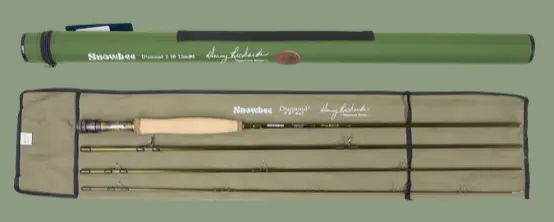
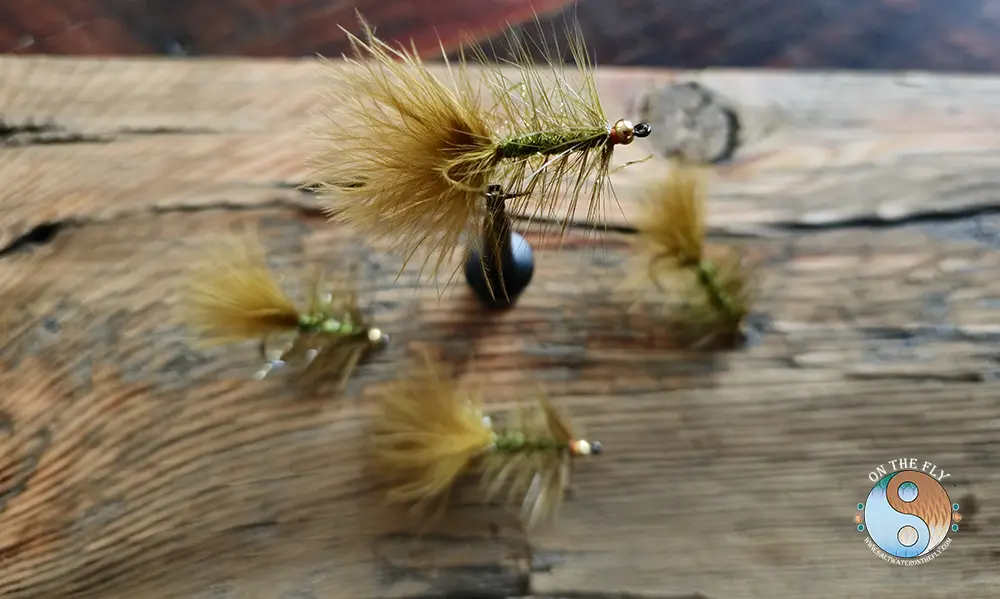
Beadhead Olive Woolly Bugger for Wilderness Lakes

Soft Hackle Pheasant Tails
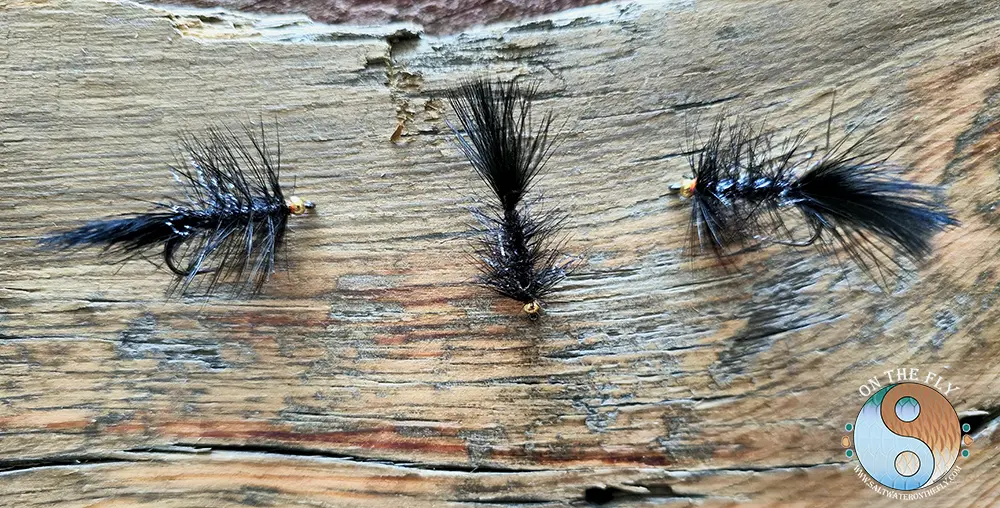
Black Brass Beadhead Woolly Bugger
Flies That Work
Choosing the right fly is important in these clear waters typical of the indian peaks wilderness. While conditions change, some patterns are reliable standbys for alpine lakes. Think small and natural to imitate local insects.
Dry flies work well when fish are rising to surface insects. Try Elk Hair Caddis (sizes 12-16), Parachute Adams (14-18), or Griffith’s Gnat (18-22) for midges. Nymphs are great for fishing subsurface when fish aren’t actively feeding on top.
Consider Prince Nymphs (12-16), Hare’s Ear (12-16), or Pheasant Tails (14-18). If you need to go deeper or imitate small fish, Woolly Buggers (4-8, olive/black) are always a good bet in high mountain lakes like Lake Isabelle or Diamond Lake.
Local knowledge is invaluable for fishing in the indian peaks wilderness. Books like “A Fly Fishing Guide to Colorado’s Indian Peaks Wilderness Area” offer detailed fly patterns and specific lake information. But these general patterns should get you started targeting trout in the Roosevelt National Forest waters.
Tips for High Lake Angling
Fishing these pristine lakes within the peaks wilderness area takes a bit of finesse. The water is usually crystal clear, making trout easily spooked. Approach the shoreline carefully and avoid casting shadows over the water.
Use light tippets, often 4x or 5x, to avoid detection. Make delicate presentations; don’t slap your line on the water. Watch for rising fish to see what they might be eating before selecting your fly.
Focus your casts near inlets, outlets, submerged rocks, or drop-offs where fish often congregate. Early morning and late evening are typically the most active feeding times in alpine environments. Don’t be afraid to try nymphing under a small strike indicator if dry flies aren’t producing results.
Remember that Colorado Parks and Wildlife fishing regulations apply throughout the indian peaks wilderness. You’ll need a valid Colorado fishing license. Be prepared for changing mountain weather, even in summer, as conditions can shift rapidly above tree line near the Continental Divide.
Conclusion of Indian Peaks Wilderness Area
The Indian Peaks Wilderness Area is a truly special place right on the doorstep of Colorado’s Front Range cities like Boulder and Denver. It offers challenging adventures and profound natural beauty within the Arapaho & Roosevelt National Forests. Whether you’re planning an ambitious multi-day backpacking loop across the Continental Divide or a quiet day casting flies on an alpine lake like Long Lake or Mitchell Lake, this wilderness demands respect and preparation.
With its soaring peaks like James Peak, wildflower meadows near Brainard Lake, and sparkling waters such as Crater Lake or Diamond Lake, the Indian Peaks Wilderness Area provides an escape into a wilder world reminiscent of a mountain national park. Remember to secure your permit required for overnight stays, practice Leave No Trace, pack out all human waste several inches deep, keep dogs on a hand-held leash, and check conditions with the Forest Service or Sulphur Ranger District before you go.
Exploring this remarkable wilderness area, whether through day hiking or extended backpacking, offers incredible rewards. From the easily accessible Rainbow Lakes to the remote Gourd Lake or the challenging Pawnee Lake, the indian peaks hold adventures for many skill levels. Enjoy the rugged beauty of this protected piece of the Rocky Mountain landscape.
